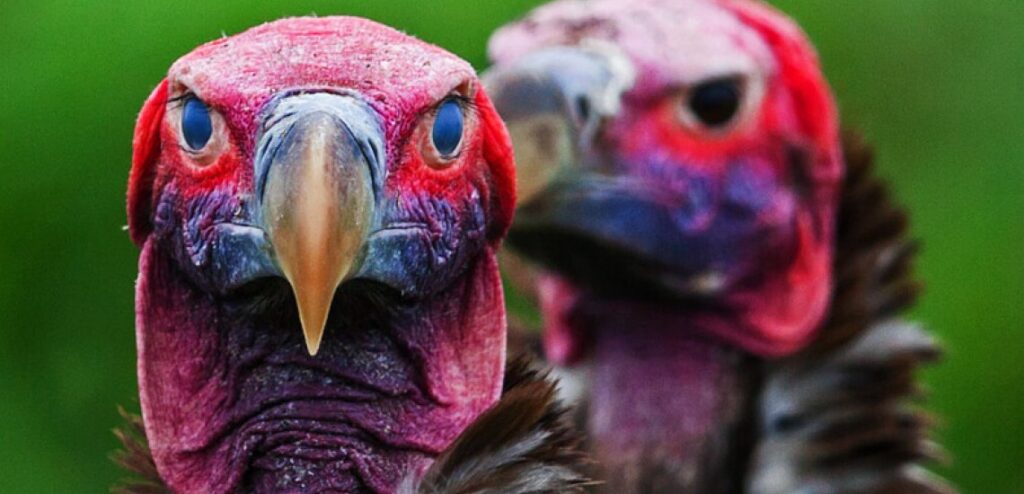Up to 100 vulture deaths prevented by rapid response to poisoning

On Sunday morning, a wildlife ranger in Nairobi, Kenya discovered 20 dead and 5 critically ill vultures slumped around a poisoned hyena carcass. Despite these tragic casualties, a rapid response protocol set up with the help of BirdLife almost certainly saved the lives of many more.
By Jessica Law
On the morning of the 27th of January, Eric Ole Reson was on his routine patrol on the Northern border of the Masai Mara when he spotted a group of vultures struggling to fly. Concerned, he hurried towards them, and stumbled across a tragic scene: 20 vultures lay dead around a hyena carcass, all of them Globally Threatened species including the Lappet-faced Vulture Torgos tracheliotos (Endangered) and Rüppell’s Vulture Gyps rueppelli (Critically Endangered). Beside them, six more vultures thrashed about in a critically ill state.
But despite this horrifying diorama, Reson didn’t panic or despair – he took action immediately. He knew exactly what he needed to do thanks to Kenya’s Rapid Response Poisoning Protocol, set up last year by a collaboration between BirdLife partners and other Kenyan conservation organisations* to tackle the growing threat of vulture poisoning.
Reson works for the The Peregrine Fund and the Masai Mara Wildlife Conservancies Association, organisations who regularly patrol the area for signs of incidents just like these. Following protocol, Reson mobilized support from Kenya Wildlife Service and Kenya Bird of Prey Trust, members of the collaboration, who arrived on the scene in time to collect forensic samples and rescue the surviving birds. They were joined by nearby community members who had also been trained in the Rapid Response Poisoning Protocol.
Four sick vultures were successfully treated and released
Since the hyena carcass was still partly uneaten, the scene would certainly have attracted more scavengers – especially vultures – if action was not taken. The area was therefore decontaminated by incinerating the hyena and poisoned vultures. Four of the sick vultures were treated and released, and two are being kept for observation by the Kenya Wildlife Service veterinarian. Forensic samples were taken as evidence to prosecute this illegal activity.
“Had the team not responded to the poisoning event in time, we would have likely seen more than 100 dead vultures,” said Simon Thomsett, Director and Trustee of the Kenya Bird of Prey Trust, which treats and rehabilitate sick and injured raptors.
Eric Ole Reson reflects: “Whilst this event is indeed unfortunate and uncalled for, it highlights and significantly underpins the value of Wildlife Poisoning Intervention Training.”
But why are vultures being poisoned in the first place? It’s not as if they harm humans, or, indeed, any other living animal. In fact, they help us immeasurably by cleaning up animal carcasses before disease has a chance to spread. “When scavengers and carnivores are lost from an ecosystem, the remaining imbalance can cause unexpected human and livestock health problems,” asserts Rebecca Garbett, Vulture Conservation Manager for Birdlife International in Africa.
The truth is that vultures are the unintended casualties in the tension between livestock farmers and predators such as lions, hyenas and leopards. Without compensation in place, livestock farmers often resort to lacing their dead livestock with easily accessible agro-chemicals with the intention to kill predators – but they end up killing far more.
Mr. Charles Musyoki, Director General of Kenya Wildlife Services, says laws are changing in the vultures’ favour: “Last month we signed an amendment to the Kenya Wildlife Act of 2013 which makes it a criminal offense for anyone to poison wildlife… with modern technology and increased legal structures and forensic ability, we will soon catch up with those who indiscriminately poison wildlife.”
In the past two years, vulture poisoning in the Masai Mara has dropped by 50%
However, it’s not just about punishing wrongdoers. Understanding and engaging with local communities is also essential in preventing poisoning from happening in the first place. Awareness campaigns have already begun to change minds, and many local community champions have stepped forward to be trained in Rapid Response Poisoning Protocol. This isn’t the first disaster that has been averted: in the past two years, the planned poisoning of two lion prides was averted, and the overall poisoning of vultures in the Masai Mara has been reduced by more than 50%.
So although Kenya’s vultures are still in peril, incidents like this show that when people work together, they can make real change and provide hope for these struggling species.
Dr. Paul Matiku, Executive Director of Nature Kenya (BirdLife Partner), confirms: “The work of multiple partners across the southern Kenya landscape has established a growing network of rangers, security personnel, tour guides, scientists, conservationists, conservancy managers, and government officials that are committed to ensuring that mortalities from poisoning events are at a bare minimum. This work will eventually stamp out wildlife poisoning altogether.”
*‘Preventing Poisoning to Save Africa’s Vultures’ is financed by BAND Foundation and jointly implemented by Nature Kenya, The Peregrine Fund and BirdLife International. This work in Kenya is also supported as part of a programme to tackle vulture poisoning running jointly across Kenya, Botswana and Zimbabwe, funded by Fondation Segré.
The programme feeds into the ambitious Multi-species Action Plan under the Convention on Migratory Species to save all threatened vulture species over 128 countries in Africa and Eurasia.


